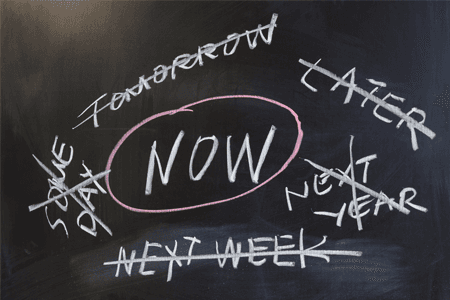How to Brainstorm Effectively: Tips From a Former Consultant
Published: Oct 28, 2015

Andrew Faircloth and Brent Macon were management consultants for three years (Andrew with Bain & Co., Brent with McKinsey & Co.). They started Primer Sports in August to help outgoing professionals use sports to connect with people in the workplace and beyond. Both are first-time entrepreneurs. This is the second in a series of posts for Vault in which they discuss some of the issues they have faced so far in their journey from consultants to entrepreneurs, and how their career experiences to date have helped them.
We are a two-person team that's long on ideas but short on time. Andrew is in the midst of a 12-week coding course at The Iron Yard to expand our design capability, so having efficient and effective brainstorming sessions is important to our productivity. Communication is critical when we're not working in the same space. Having good thought sessions allows us to set and evaluate our goals, and create and refine action plans to run towards.
We break our process into four steps:
1. Decide on topic and outcome for the brainstorm
2. One person owns 'pre-work' and presentation
3. Discuss and align
4. Agree on how to track and when to re-evaluate
Note: this can be used for tasks as simple as agreeing on the plan for the week or as in-depth as debating our core product strategy; the process still holds. Here are some more details on how we use each step, and how it can be applied more broadly:
Decide on topic and outcome for the brainstorm
This feels simple, but it's important to agree ahead of time to facilitate preparation and ensure a meeting accomplishes its goals. It's also important to prioritize the topics that truly matter. There are handfuls of subjects we could spend time on, but we have to decide what should be our focus. It's the same for any team that's busy but needs to keep humming.
One person owns 'pre-work' and presentation
We've found it helpful to have one person plan and facilitate the brainstorming session. This often involves research ahead of time if there are options with tradeoffs to consider for a given decision. The owner of a session will structure the discussion and often offer a hypothesis that we start with and iterate from. This is a direct reflection of our consulting days; it's more efficient to have one person think through a well-rationed position on a topic and then let the team weigh in to pressure test and refine.
Discuss and align
The core of any good brainstorm session. We're still fond of whiteboarding and do that primarily. But having removed the constraints of business casual office culture, we also have some of our best discussions while throwing a football or at the gym. It can be helpful to switch up the setting to get ideas flowing, something any team can accomplish by getting out of the office periodically.
Agree on how to track and when to reevaluate
This step is easy to forget but important to prioritize. When we align on a path forward, we try and agree how we're going to track if the decision is working out and when we need to revisit to make sure our plans are still valid. This is easier for hard metrics like subscriber growth, but equally necessary for more qualitative goals like ensuring a great customer experience or adhering to team norms.
Conclusion
Like everything in a startup, our process is evolving and we're trying to get better at coming up with ideas and action plans without swirling and losing time. We've found that if we can align on what we're going to decide, assemble the required research ahead of time, put our brainpower towards a solution, and hold ourselves accountable moving forward, we have a decent chance for success.
Brent and Andrew can be contacted at Primerteam@primersports.com. See more at www.primersports.com.
Read More:
